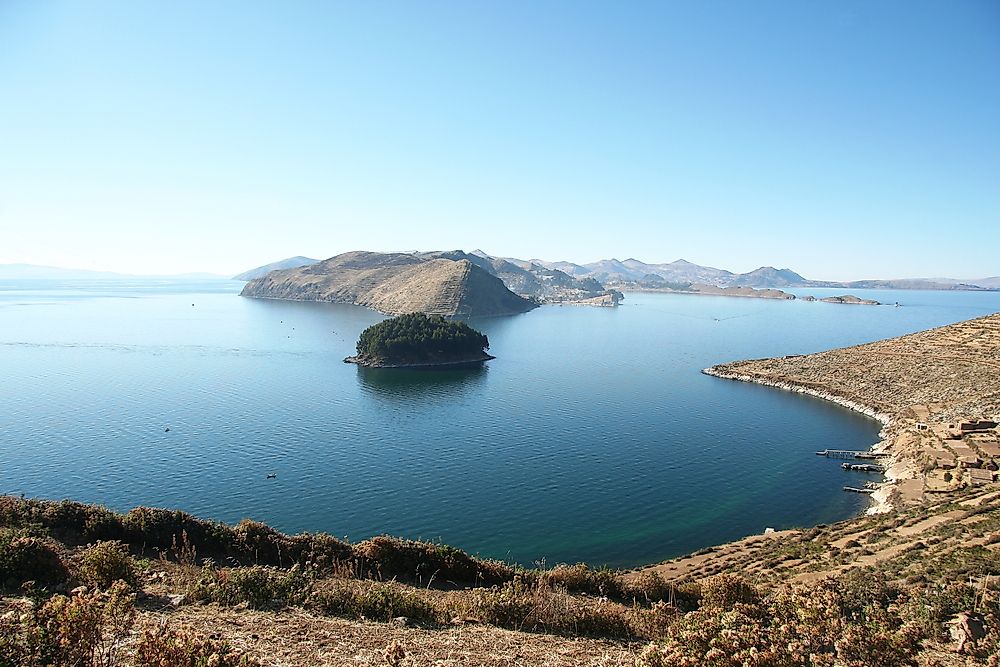Where is the Highest Lake in the World?

Lake Titicaca, straddling the boundary between Peru and Bolivia, is the highest lake in the world at an elevation of 12,507 feet above sea level. Located in the Andean Altiplano, the lake is longer than 120 miles and wider than 50 miles and was the center of Incan civilization. Lake Titicaca is also the largest lake in South America by water volume and surface area. It is the highest navigable lake in the world. Locally, the lake goes by several names including Huinamarc and Lego Mayor among other names. Lake Titicaca contains one of the longest climate records in South America, dating back to 25,000 years.
Brief Overview of Lake Titicaca
Lake Titicaca is located in the Andes, on the northern end of the Altiplano. The western portion of the lake lies in the Puno Region of Peru while the eastern portion is in La Paz Department of Bolivia. It is made up of two separate sub-basins which are connected by the 2,620 feet Strait of Tiquina. The larger of the two basins called Lago Grande has a mean depth of 443 feet while the smaller sub-basin called Lago Pequeno has a mean depth of 30 feet. Lake Titicaca is fed by five major river systems including Ramis, Suchez, Coata, Huancane, and Ilava. Other smaller streams also empty into the lake.
Features of the Lake
The level of water in the lake has been receding since 2000 due to the shortened rainy seasons. However, the level of water also fluctuates seasonally with a slight rise during the rainy season which is mainly in summer (from December to March). The waters of Titicaca are limpid and slightly brackish with salinity level ranging from 5 to 5.5 per 1,000 parts. The cold wind over the surface of the lake gives it a temperature of 10-14 degree Celsius. In winter, the winter temperature ranges from 10 to 11 degrees Celsius. Analysis of the waters shows the presence of several minerals including sodium chloride, magnesium sulfate, and calcium sulfate. Since the lake is located on the lower point of Altiplano, the waters of the higher plateau find their way into the lake and little water drains out. Thus, this deep and large lake has been a collecting basin for over 25,000 years.
Flora and Fauna
Lake Titicaca hosts over 530 aquatic species. It is home to a large population of water birds and was designated as a Ramsar Site. Some of the threatened aquatic species such as Titicaca grebe and Titicaca water frogs are restricted to the lake. Approximately 90% of the species of fish in the basin are endemic, including the Orestias species that can only be found in the lake. About 24 species of freshwater snails also form part of the species of Titicaca. The vegetation includes reeds which grow in waters that are shallower than 9.8 feet. The major threat to the wildlife of Lake Titicaca is the water pollution which has resulted from the increased population living around the lake and the introduction of new species. Lake Titicaca was nominated “Threatened Lake of the Year” in 2012 by GNF.











